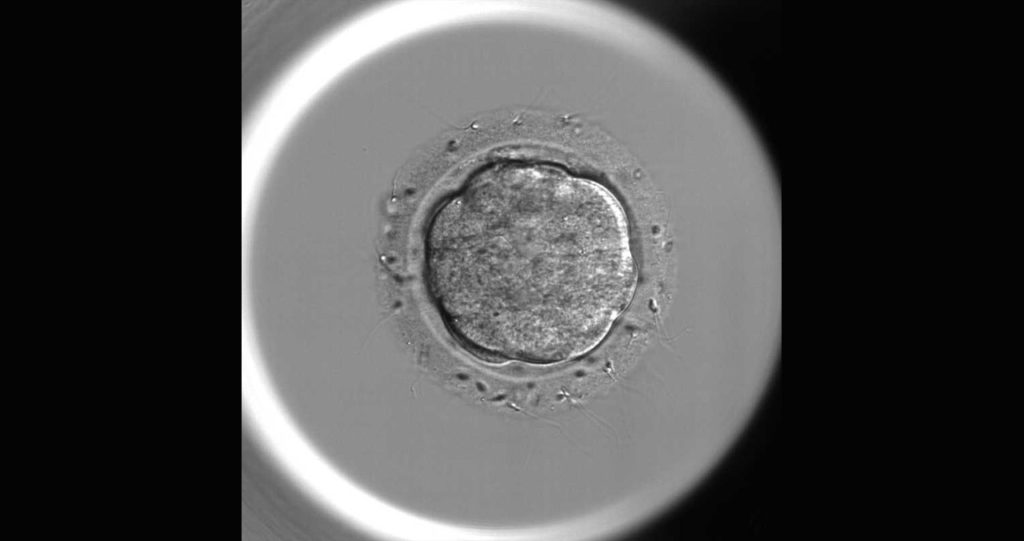Menu
Menu

Article:
Blastocysts from partial compaction morulae are not defined by their early mistakes
Monica Parriego, Lluc Coll, Beatriz Carrasco, Sandra Garcia, Montserrat Boada, Nikolaos P Polyzos, Francesca Vidal, Anna Veiga.
Reprod Biomed Online. 2023 Nov 18;48(4):103729.
DOI: 10.1016/j.rbmo.2023.103729
A group of researchers at Dexeus Mujer, led by Dr. Mònica Parriego, has conducted a retrospective study to analyze whether partial compaction during morula formation in blastocysts can influence the developmental capacity and implantation potential of an embryo compared to those with complete compaction.
The researchers analyzed a total of 872 embryos derived from 196 preimplantation genetic diagnosis cycles performed by 165 patients for aneuploidy (PGT-A). A total of 430 embryos did not include at least one cell during compaction (representing 49,3%), while the remaining 442 embryos formed a fully compacted morula (50,7%).
The possible effect of maternal age and ovarian response on compaction was analysed. The morphokinetic characteristics, blastocyst formation rate, morphology and cytogenetic constitution of the blastocysts obtained were compared. Comparisons of reproductive outcomes after transfer of euploid blastocysts from both groups were established. Finally, in a subset of embryos, the concordance of the chromosomal constitution of the abandoned cells and the corresponding blastocyst was assessed by trophectoderm biopsies.
According to the authors, partial compaction morulae show a reduced developmental ability compared with full compaction morulae. Resulting blastocysts from both groups, however, have similar euploidy rates and reproductive outcomes. Cell exclusion might be a consequence of a compromised embryo development regardless of the chromosomal constitution of the excluded cells. Neither female age nor the number of oocytes collected affected the prevalence of partial compaction morulae.
DEXEUS CAMPUS
Gran Vía de Carles III 71-75
08028 Barcelona
campus@dexeus.com
(+34) 93 227 47 09
® Copyright 2021-2024 Dexeus Mujer Foundation – Gran Via Carles III 71-75. 08028 Barcelona. Spain
| Cookie | Duration | Description |
|---|---|---|
| cookielawinfo-checkbox-analytics | This cookie is set by the GDPR cookie consent plugin. The cookie is used to store the user's consent for cookies in the "Analytics" category. | |
| cookielawinfo-checkbox-functional | The cookie is set by the GDPR cookie consent to record user consent for cookies in the "Functional" category. | |
| cookielawinfo-checkbox-necessary | This cookie is set by the GDPR cookie consent plugin. Cookies are used to store the user's consent for cookies in the "Necessary" category. | |
| cookielawinfo-checkbox-others | This cookie is used by the GDPR component. It is used to store the user consenting cookies in the "Other" category. | |
| cookielawinfo-checkbox-performance | This cookie is set by the GDPR cookie consent plugin. The cookie is used to store the user's consent for cookies in the "Performance" category. | |
| elementor | ||
| viewed_cookie_policy | The cookie is set by the GDPR cookie consent plugin and is used to store whether or not the user has consented to the use of cookies. It does not store any personal data. |
| Cookie | Duration | Description |
|---|---|---|
| _icl_visitor_lang_js | To allow multi-language functionality for web content. | |
| wpml_browser_redirect_test | Used to verify if cookies are allowed in the browser. |
| Cookie | Duration | Description |
|---|---|---|
| _ga | The _ga cookie, installed by Google Analytics, calculates visitor, session and campaign data and also tracks site usage for the site's analytics report. The cookie stores information anonymously and assigns a randomly generated number to recognize unique visitors. The _ga cookie, installed by Google Analytics, calculates visitor, session and campaign data and also tracks site usage for the site's analytics report. The cookie stores information anonymously and assigns a randomly generated number to recognize unique visitors. | |
| _ga_1WD9MFDMJK | This cookie is installed by Google Analytics. |
| Cookie | Duration | Description |
|---|---|---|
| wp-wpml_current_language | Necessary for the operation of the website in the different languages |